
29-12-2025 08:30
Hello.A tiny ascomycete sprouting under Juniperus

29-12-2025 10:15
Hulda Caroline HolteHello, I found and collected this propoloid ascom

29-12-2025 09:38
Oskari VirtanenHi,could anyone help me identify this, I suspect P

28-12-2025 12:08
Margot en Geert VullingsThis possible Karstenia was found on the bark of d

21-12-2025 21:32
Pol DebaenstHello, Garden, Burgweg 19, Veurne, BelgiumOn 10/1

26-12-2025 21:19
Arnold BüschlenPithyella chalaudii Priou. Ist als Bryoparasit in

21-12-2025 09:32
Hello.A tiny ascomycete found embedded in wood in

18-12-2025 21:17
Pol DebaenstThe identification took me to Byssonectria deformi
Encoelia carpini
Andgelo Mombert,
18-03-2022 14:31

Bonjour,
J'ai découvert Encoelia carpini en Franche-Comté et j'aimerais connaitre la répartition française de cette espèce peu documentée.
15/03/2022, sur branche morte attenante de Carpinus betulus. Besançon, France.
Ascospores : 17,5-23,2 x 4,1-5,3 µm (m : 19,4-4,8 µm), allantoïdes à cylindriques, hyalines, non septées, à contenu spumeux (vivantes) ou biguttulées (mortes).
Asques : cylindriques, à sommet non amyloïde, avec crochet, contenant huit spores bisériées.
Paraphyses : renflées au sommet, grêles, à contenu brun, septées.
Il y a une récolte dans l'Ouest, mentionnée dans fongibase (Mycofrance), mais avec peu d'informations. Je vais faire quelques recherches.
Merci
Andgelo
Andgelo
Hans-Otto Baral,
18-03-2022 16:31

Re : Encoelia carpini
very good! I think this is correct, although the spore size differs strongly from the protologue. But I have quite variable sizes in my folder, e.g. X.2014: N. Aplin measured 17 - 19.3 x 4.3 - 5, but K. Pärtel 12-16 x 3.6-4.6.
Rehm gives 12-15 x 3-3.5, probably dead.
I assume I wrote "aff. carpini" because of this deviation.
The excipulum should be of t. porrecta.
"attenante" means attached?
Andgelo Mombert,
18-03-2022 18:26

Re : Encoelia carpini
Merci Zotto,
Une petite question, pourquoi l'espèce figure dans tes dossiers ''Rutstroemia tiliacea-like'' alors que l'espèce a été synonymisée avec Sclerencoelia fascicularis (K. Partel et al) ?
Merci d'avance
Andgelo
Nick Aplin,
18-03-2022 23:46
Re : Encoelia carpini
Salut Zotto and Andgelo,
Here's the discussion about my collection back in 2015:
http://www.ascofrance.com/search_forum/33659
I found that the ascospores shrunk considerably between dead vs. alive, which probably explains the wide range in the literature. I sent my collection to K. Partel several months after collecting it - Sequencing of the collection was attempted, but any results were not shared with me.
I'm not certain about the synonymy with Sclerencoelia fascicularis - Our collections seem different from that species, so for the time being (and in the absence of any better ideas), I prefer to use the name E. carpini.
Cheers,
Nick
Here's the discussion about my collection back in 2015:
http://www.ascofrance.com/search_forum/33659
I found that the ascospores shrunk considerably between dead vs. alive, which probably explains the wide range in the literature. I sent my collection to K. Partel several months after collecting it - Sequencing of the collection was attempted, but any results were not shared with me.
I'm not certain about the synonymy with Sclerencoelia fascicularis - Our collections seem different from that species, so for the time being (and in the absence of any better ideas), I prefer to use the name E. carpini.
Cheers,
Nick
Hans-Otto Baral,
19-03-2022 12:19

Re : Encoelia carpini
Hi Nick
in my folder carpini I have Kadri's analysis of your specimen and the strain number KL393. With this number I was able to find the sequence in my sequence-file.
>LT158472 Encoelia carpini (as Rutstroemiaceae sp.) KL393 ITS, isolate KL393, specimen TAAM:198452 - Blast ITS: 90.5% R. bolaris, 90.2% tiliacea & punicae
GTAGGTGAACCTGCGGAAGGATCATTACAGAGTTCATGCCCTCACGGGTAGACCTCCCACCCCTGTGTATCTATACCGCGTTGCTTTGGCGAGCTGCGCGGGGCCTGCCCGCCCCGCGCCCCAGGCTTTCGAGCCTGAGAGTCGCTCGCCGGAGGAAAACCCAAACCCTGATTATCAGTGTCGTCTGAGTACTATACAATAGTTAAAACTTTCAACAACGGATCTCTTGGCTCTGGCATCGATGAAGAACGCAGCGAAATGCGATAAGTAATGTGAATTGCAGAATTCAGTGAATCATCGAATCTTTGAACGCACATTGCGCCCCCTGGTATTCCGGGGGGCATGCCTGTCCGAGCGTCATTTCAACCCTCAAGCGCAGCTTGGTATTGGGCTTCGTCGGTCACCCGGCGTGCCTCAAAAGCAGTGGCGGCGCCGCTGAGCCCTGAACGTAGTAGCAAACTCTCGTTACAGGTGCCCCGCGTGCCCTCGCCATCAAACCCCCCATCTTTCTATGGTTGACCTCGGATCAGGTAGGGATACCCGCTGAACTTAAGCATATCA
GTAGGTGAACCTGCGGAAGGATCATTACAGAGTTCATGCCCTCACGGGTAGACCTCCCACCCCTGTGTATCTATACCGCGTTGCTTTGGCGAGCTGCGCGGGGCCTGCCCGCCCCGCGCCCCAGGCTTTCGAGCCTGAGAGTCGCTCGCCGGAGGAAAACCCAAACCCTGATTATCAGTGTCGTCTGAGTACTATACAATAGTTAAAACTTTCAACAACGGATCTCTTGGCTCTGGCATCGATGAAGAACGCAGCGAAATGCGATAAGTAATGTGAATTGCAGAATTCAGTGAATCATCGAATCTTTGAACGCACATTGCGCCCCCTGGTATTCCGGGGGGCATGCCTGTCCGAGCGTCATTTCAACCCTCAAGCGCAGCTTGGTATTGGGCTTCGTCGGTCACCCGGCGTGCCTCAAAAGCAGTGGCGGCGCCGCTGAGCCCTGAACGTAGTAGCAAACTCTCGTTACAGGTGCCCCGCGTGCCCTCGCCATCAAACCCCCCATCTTTCTATGGTTGACCTCGGATCAGGTAGGGATACCCGCTGAACTTAAGCATATCA
It was uploaded as Rutstroemiaceae sp. and only yesterday I added the name Encoelia carpini to it.
Sclerencoelia is a genus with textura angularis, whereas the present species belongs in the group of Rutstroemia tiliacea and R. punicae, morphologically. Genetically apparently not, because the tiliacea-group is very homogeneous in the ITS and this one is distant, the closest was R. bolaris (with angularis!), but tiliacea and punicae of little more distance.
I do not have a phylogeny but i will do.
Zotto
P.S. I must add that this sample was sequenced also for LSU, SSU, ef1a and rpb2.
It is a mistake that only UK is given but not even your name or more details except for Carpinus branch.
The ITS+LSU tree is running.
Hans-Otto Baral,
19-03-2022 16:17

Re : Encoelia carpini
Here now two quick analyses. In NJ the values are typically higher, but NJ weights only the distances. The ML phylogeny does not give any support for a relationship, we only know it is a Rutstroemiaceae.
Nick Aplin,
20-03-2022 00:50
Re : Encoelia carpini
Hi Zotto,
Great - Thanks very much for this. It's good to know that my collection provided good genetic data, even though it falls within this group of Ruststroemiaceae which is a bit of a nightmare.
I must admit I didn't look in your Drive files previously for this species, but now I see Kadri's nice morphological analysis, which (along with Andgelo's vital study here) corroborates my alive vs. dead spore size.
Cheers,
Nick
Great - Thanks very much for this. It's good to know that my collection provided good genetic data, even though it falls within this group of Ruststroemiaceae which is a bit of a nightmare.
I must admit I didn't look in your Drive files previously for this species, but now I see Kadri's nice morphological analysis, which (along with Andgelo's vital study here) corroborates my alive vs. dead spore size.
Cheers,
Nick
Hans-Otto Baral,
20-03-2022 07:48

Re : Encoelia carpini
I actually overlooked your measurements of dead spores, I repeat them here:
*17 - 19.3 x 4.3 - 5
+13 - 16.5 x 3 - 4
Rehm's 12-15 x 3-3.5 largely cover your data of dead spores, so I can remove my "aff.".


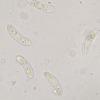
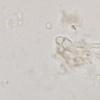
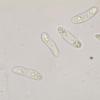
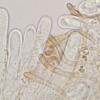
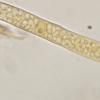
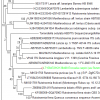
 ITS+LSU ML GTR+G+I 50 replicates
ITS+LSU ML GTR+G+I 50 replicates